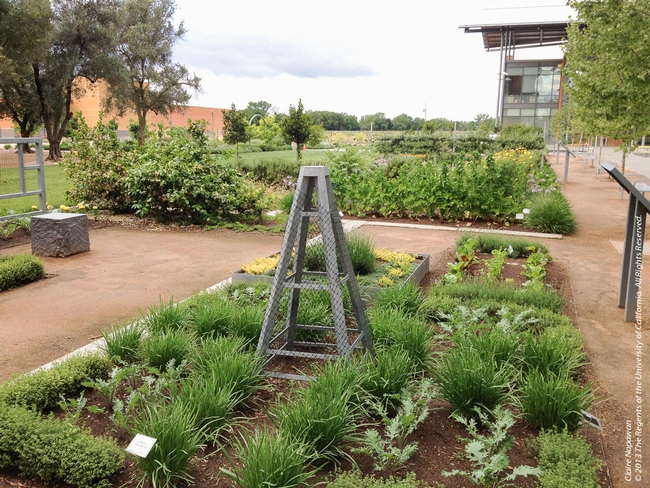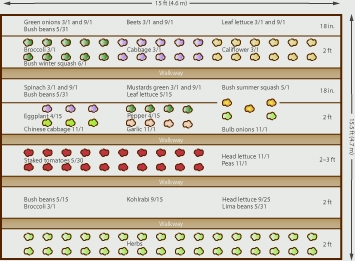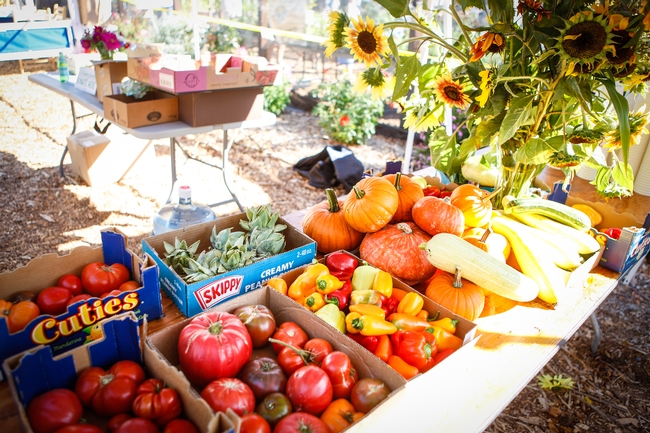
There are several ways to overcome these gardening pitfalls to help ensure you have a successful warm-season vegetable gardening experience.
Plan, plan and stick with your vegetable garden plan!
Planning is a key component to having a successful vegetable garden, but is frequently forgotten or overlooked. Planning includes selecting an appropriate location for your garden, choosing the correct varieties of crops for your space and developing a garden plan for what you would like to grow.
When selecting a location it is important that the site receives at least eight hours of full sun, is close to a water source (hose, irrigation or hand-watering) and has good soil for optimal growth. Once you have an appropriate location picked out, creating a garden plan will help contribute to your growing success.
Too often the overall size of the garden area and the size of mature plants is not considered. Keep in mind a young plant can become established and quickly overtake a small garden lot, challenging or dominating other plants for resources.
“A well planned garden can provide fresh or preserved vegetables for use year-round. The plan should contain crops and amounts to be planted, dates of planting and estimated harvest, planting location for each crop, specific spacing between rows, and trellising or support required,” according to the California Master Gardener Handbook (see Figure 13.1 on Page 342).
Invest a little time and develop a detailed plan to help guide you on where, which type and how many plants you will need for your space. Your vegetable garden plan will keep you focused while shopping at your local nursery and prevent impulse buys of tempting transplants!
Caring for your vegetable garden
Irrigation is a key component in a successful vegetable garden. Consistent, deep and sufficient watering will produce better tasting and superior quality fruits and vegetables, especially during the hot summer months when it is easy for the soil to quickly dry out.
“As a rule” the handbook says on Page 349, “it will be necessary to irrigate your vegetable garden one to three times a week in summer ... The frequency will be determined by the depth of crop roots, soil texture, and weather conditions. Wet the soil to just beyond the bottom of the root system at each watering.”
Even in a time of drought, vegetable crops require the soil to remain moist during their crop cycle. Poor irrigation practices and infrequent watering will produce smaller yields and poor quality fruits and vegetables.
Weed prevention and maintenance is an important piece in caring for your vegetable garden. Without monitoring and controlling weeds, your crops could quickly become overrun by these pesky unwanted plants. Apply a three- to four-inch layer of organic mulch to discourage the growth of weeds. Prevent weeds by hand-weeding before they become established and go to seed. The UC Integrated Pest Management (IPM) Program has detailed information available on its website about sustainable weed management in the home landscape.
Harvesting (and enjoying) your crop

“To get the most from your vegetables, harvest them when they are at the best stage for eating and store them under conditions that will keep them as close to garden-fresh as possible,” recommends The California Garden Web. “Vegetables will be crisper and cooler when harvested in the early morning.” (cagardenweb.ucanr.edu)
Once harvested don't forget to enjoy the fruits (and veggies) of your labor. Few experiences can compare with the gratification of eating homegrown fruits and vegetables for the first-time!
Learn more with UC Master Gardeners
Interested in learning more about how to grow a thriving edible garden or home landscape? The UC Master Gardener Program has University trained volunteers who are eager to help. Volunteers are available to answer questions about preparing your soil, fertilizing, mulching and more. With local programs based in more than 50 counties across California there is sure to be a workshop or class near you. Visit our website to find your local UC Master Gardener Program, mg.ucanr.edu.